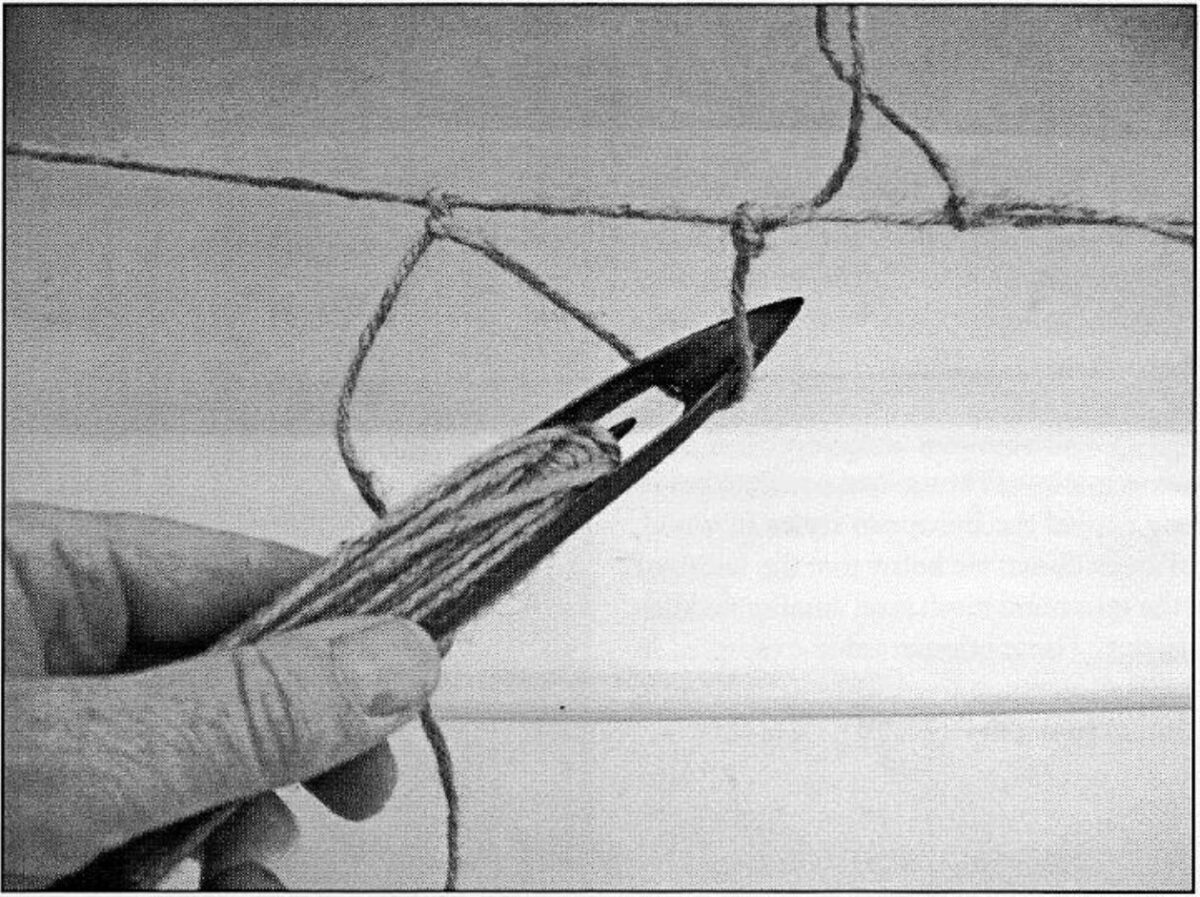
Originally Published in The Midden, 24(3).
2010.
By Grant Keddie
There are two basic types of needles used in making and repairing nets found in ethnographic collections in British Columbia. The Eye and Tongue needle and the Prong End needle. The first type (figure 1) has often been presented in publications as a traditional First Nation’s artifact.
In fact, it was introduced by Europeans to this region. This example is from the fishing village of Arbroath in my ancestral Scotland. The way the Eye and Tongue needle is strung can be seen in figure 2.
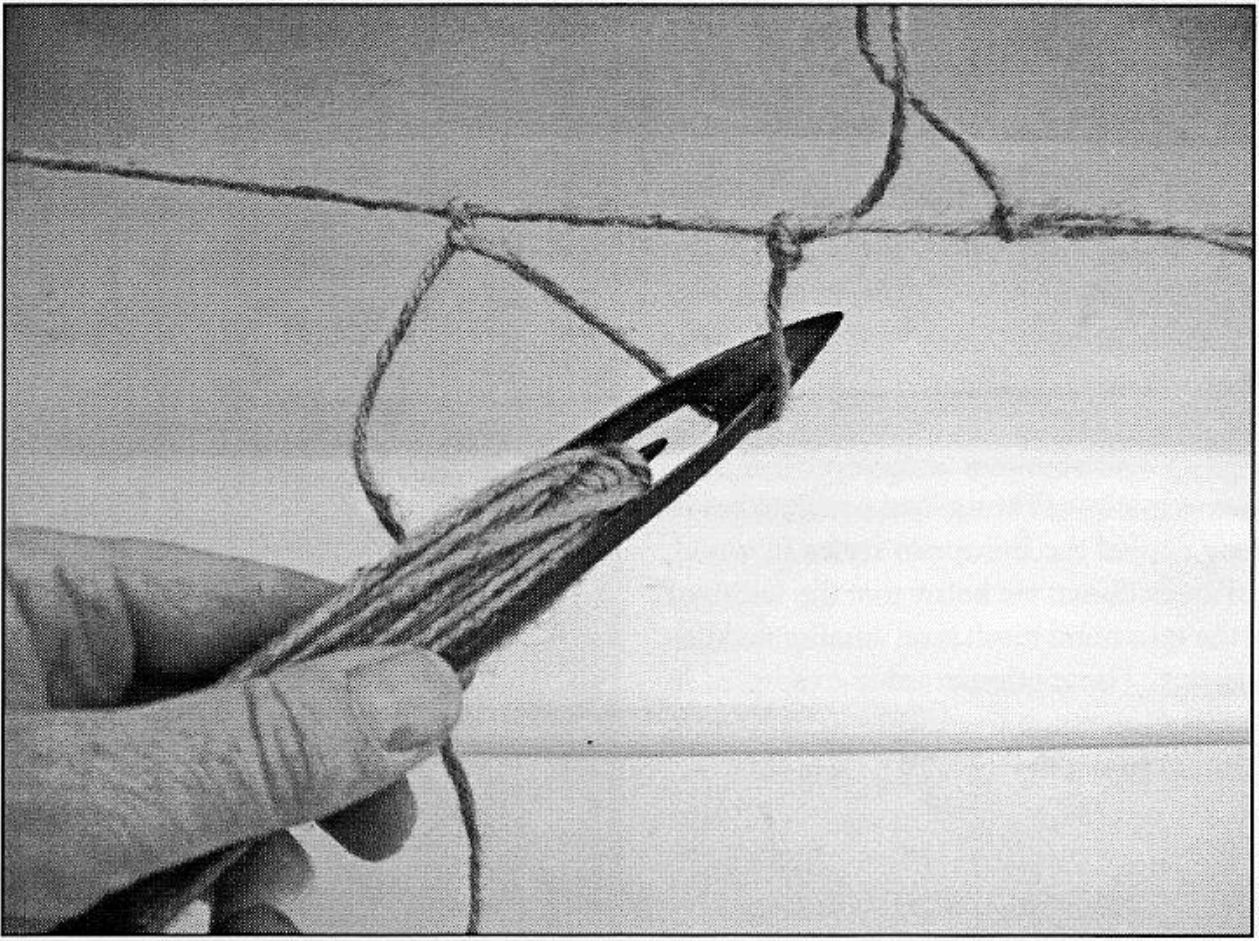
This style of needle, by having a thin point and the twine sunk in the broad grooves on the sides, passes more easily through the meshes. The design makes it less likely to get caught in the net – this is especially important when mending damaged nets.
On this Eye and Tongue needle the twine is tied to the base of the tongue and then drawn down one side to the prongs of the forked end and brought up the other side and hitched over the tongue – this side to side procedure is then repeated.
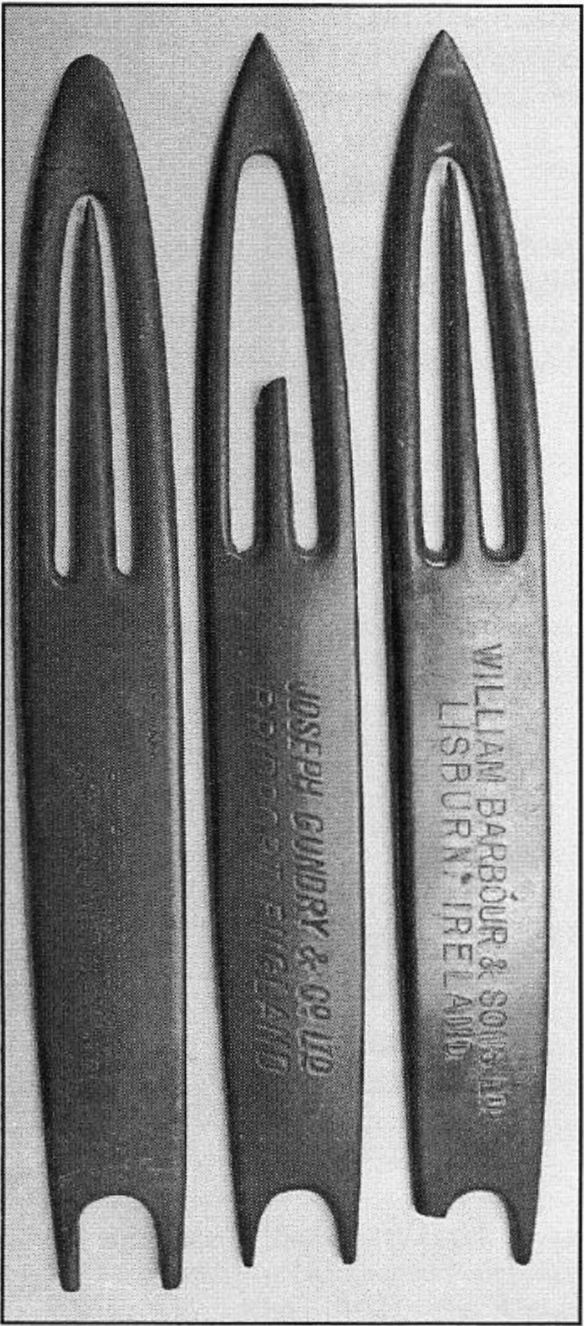
More simplified versions of this netting needle were mass produced in the early 20th century of material such as Bakelite – an early form of plastic (figure 3).
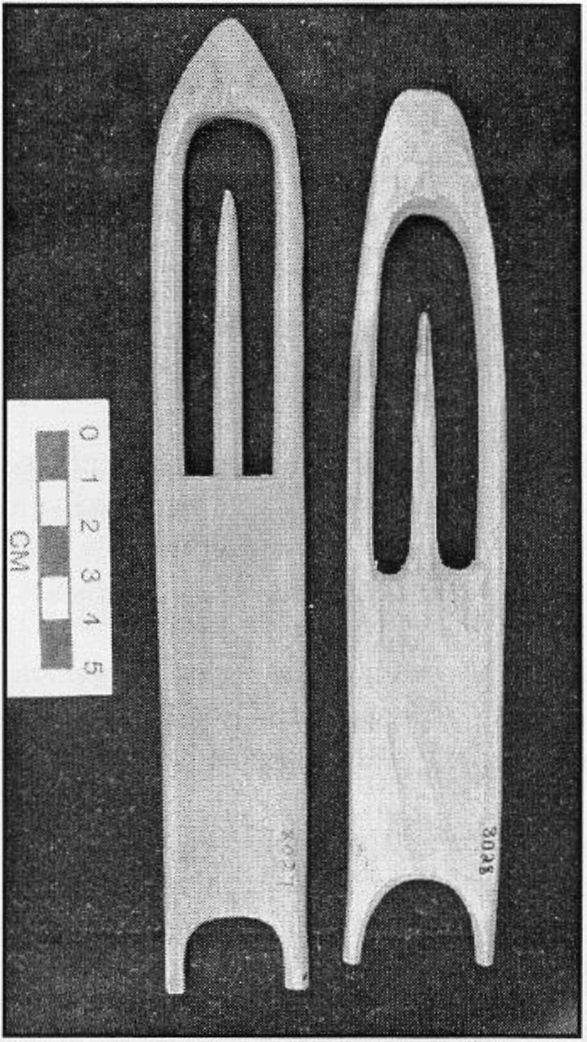
These less stylized versions were copied in wood by First Nations and now reside in museum ethnographic collections (figure 4). They have sometimes been mistakenly referred to as netting shuttles. The term shuttle is more appropriate to weaving tools that pull the weft threads.
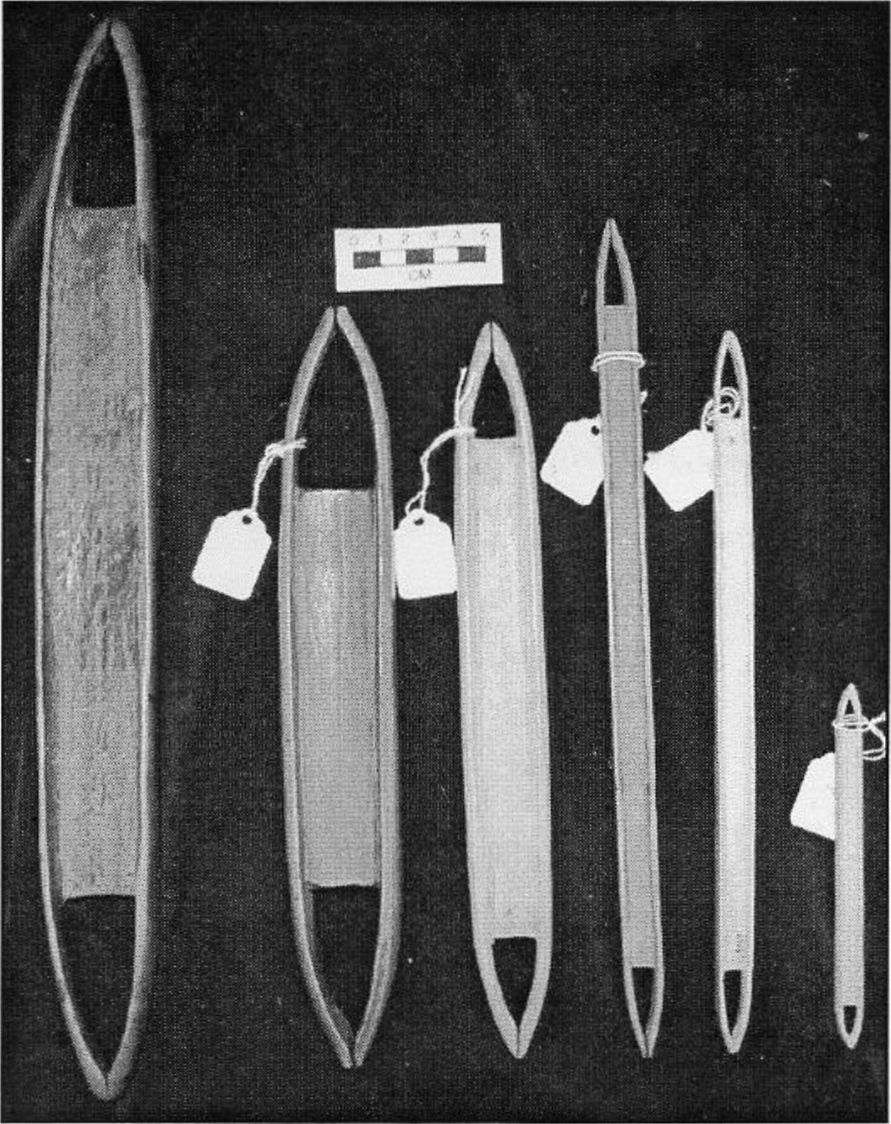
First Nations had their own versions of Prong End needles, but in the post contact period they copied the European styles in wood. These came in a variety of sizes. Since we know that the width of the net needle determines the minimum mesh size, smaller needles are needed for smaller meshes. These ethnographic examples in the Royal B.C. Museum collection range from 140mm to 400mm long and from 11mm to 46mm in width (figure 5).
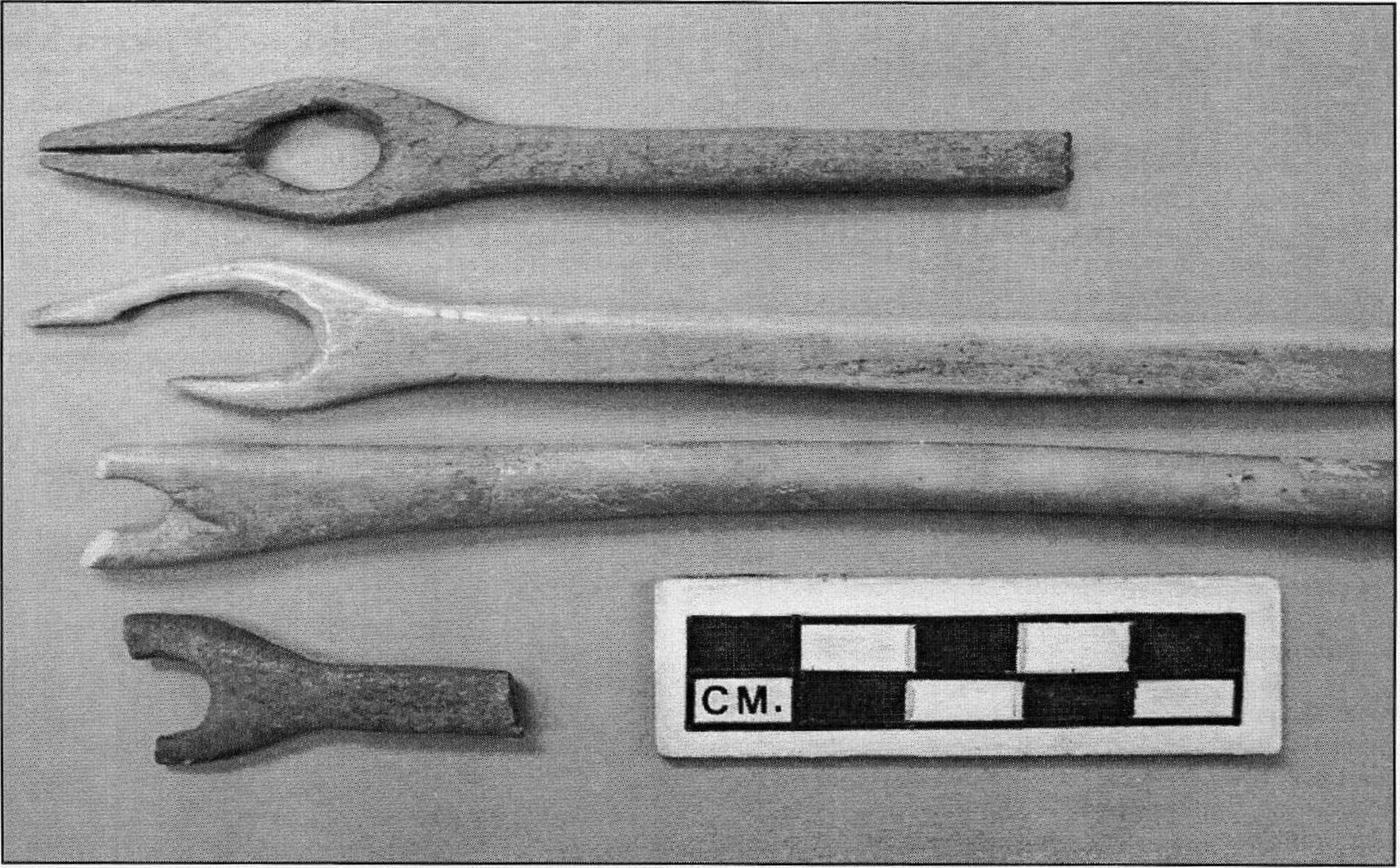
Figure 6. shows what I consider the more traditional aboriginal Prong End needles such as these from late period components of sites at Pedder Bay and Esquimalt harbour on southern Vancouver Island.
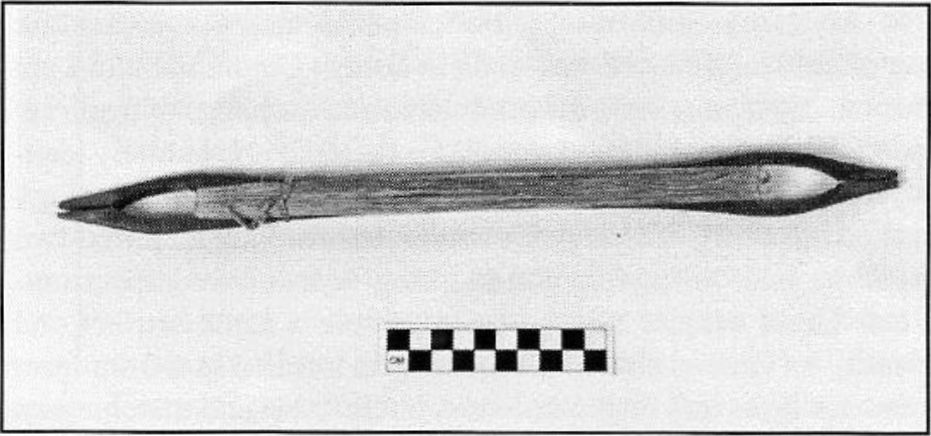
It is interesting that these archaeological Prong End needles found on the southern coast of British Columbia (mostly found broken) are identical to ethnological examples collected in Oregon and California (figure 7).
It would appear that this more traditional Prong End needle style found to the south was not overwhelmed by European influences as it was in the commercial fishing industry of British Columbia.
